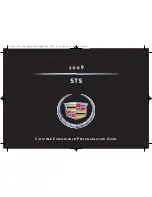
48
If excessive temperature is indicated by the transmission oil temperature gauge, check the oil level in
transmission. (Refer to the Oil Check Procedure in your Allison Transmission operators manual). Stop the
vehicle and shift to neutral. Accelerate the engine to 1200-1500 RPM. The temperature should return to
normal within two or three minutes before the vehicle resumes operation. Normal temperature for both on
and off-highway operation is 160-200 degrees F. Oil temperature should never exceed 300 degrees F.
If high temperature in either engine or transmission persists, stop the engine and have the overheating
conditions investigated by maintenance personnel.
CAUTION: The engine should never be operated for more than 30 seconds at full throttle with the trans-
mission in gear and the vehicle not moving. Prolonged operation of this type will cause the transmission
oil temperature to become excessively high and will result in severe overheat damage to the transmission.
If the transmission overheats during normal operation, check the oil level in the transmission.
ENGINE HIGH IDLE SWITCH
The high idle control positions the throttle lever at high idle when air supply pressure is insufficient for
normal operation of the throttle system. This allows the engine to be warmed while the air system is being
charged. The high idle can be activated by the electric toggle switch located on the instrument panel when air
system is at normal operating pressure. With the transmission in neutral and the parking brake applied,
move toggle switch to high position to raise speed to a constant high idle. Before shifting into gear, return
switch to low position.
CAUTION: High idle must not be engaged except when transmission is in neutral and parking brake is
applied.
TRANSMISSION BREATHER
The transmission has a self-contained breather near the cooler line ports. Care should be exercised to
avoid plugging this breather with paint, undercoating or any other material. The breather provides a passage
for normal expansion and contraction of air and fluid within the transmission. A small amount of oil mist
comes out of the breather during normal operation. If an excessive amount of oil is found in this area, the
cause should be investigated.
USING THE HYDRAULIC RETARDER MTB 643
The function of the retarder is to provide auxiliary braking in all conditions by combining both hydraulic
and clutch pack retardation capabilities. The retarder is installed on the rear of the transmission in place of the
output housing. In most of the applications the output retarder is applied in conjunction with the service
brakes. Selecting a lower hold range position when using this type retarder is recommended for maximum
effect.
Observe the following cautions when using output retarder.
•
Apply and operate the retarder with engine at closed throttle only.
•
Do not use the retarder when road surfaces are slippery. Do not apply retarder control or de-energize
the system at the master control switch.
•
Observe transmission and engine temperature limits at all times. Select the lowest possible transmis-
sion range to increase the cooling system capacity and total retardation available.
•
In the event of overheating, decrease vehicle speed and manually downshift to reduce retardation
power requirements.
•
Observe the retarder “Alert Light” to ensure that the vehicle control system is functioning properly
•
Consult the retarder manufacturer's owner/operator manual for additional information.
















































